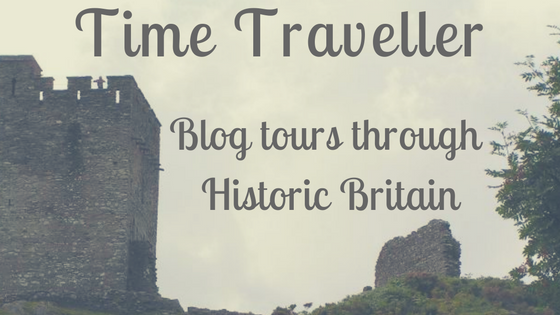 |
| Author's own photo |
Like all medieval princes, Llewelyn was fairly peripatetic and one of his favourite places was his hunting lodge at Trefriw. The story goes that Joan took exception to walking up to the little chapel above Trefiw. But I can recommend that the climb rewards the effort. Services are still held in this 11th century church, and there is evidence that there has been a church here since the 6th century.
 |
| The medieval chapel at Llanrhychwyn - author's photo |
So we can visit these people in death, and see where they prayed, but can we visit where they lived? Well, yes, up to a point. The royal palace at Aberffraw is buried under a housing estate, and there is an ongoing debate as to the exact location of the palace at Abergwyngregyn. In the village there is a raised mound, which has been suggested as some kind of motte, but there is also an old manor house, Pen y Bryn, dating back to the 17th century which, it is claimed by some, was built on the site of the former palace.
The priory at Llanfaes, where Joan was sent by Llewelyn after an indiscretion, has also long since gone. But in Newborough, the royal 'Llys' has been partially excavated. Drive round the corner too quickly and you'll miss it, in the field above the road, but it's there. Here, at Llys Rhosyr, it is possible to see the footings of the original buildings as well as the views across to the mainland.
 |
| author's own photo - Snowdonia in background |
Here is my photograph of one of those information boards, showing how the site might have looked. But of course, much of life was spent not in houses, but castles - the construction for which North Wales is famed.
Many of these castles belonged to the Welsh Princes, and it's believed that Llewelyn Fawr was born in an earlier building on the site of Dolwyddelan Castle, which he had built. It offers commanding views of the surrounding landscape, and part of it is still intact. For atmosphere and a feel of the past, it's hard to beat.
 |
| Dolwyddelan Castle - my father's photo, and the header for this blog |
Like Criccieth, some native castles were taken over by Edward I and extended. At Rhuddlan, Edward went further still and altered the course of the river Clwyd when he built the castle there. Rhuddlan is not as well known, perhaps, as the major Edwardian castles which make up the 'Iron Ring'. Llewelyn Fawr's grandson poignantly became known to history as Llewelyn the Last, defeated by Edward in 1282. Edward began a massive programme of building, using the 'concentric' design of a castle within a castle. He was determined that the Welsh would remain subjugated and at Conwy Castle, he used stones from Aberconwy Abbey which had been the resting place of several Welsh princes. It was a powerful symbol of conquest.
This picture of Caernarfon Castle shows how impenetrable and formidable these structures appeared to be. And yet Caernarfon was breached, in an uprising of 1294 led by Madog ap Llewelyn and was besieged again during the uprising of Owain Glyndwr (AD1400-1415).
In this, Caernarfon has something in common with Harlech Castle, which was occupied by Owain's forces between 1404 and 1409.
But Caernarfon also shares a secret with Beaumaris Castle on Anglesey, in that it was never actually finished. Wander round Caernarfon and you might not realise, since most castles these days are at least partially ruined. But step inside Beaumaris and you will see that only the outer walls were completed and the castle was never fully inhabited.
 |
| The unfinished north gatehouse - Jeff Buck |




Great article, Annie! Just this past weekend I was reminiscing about my trip there 4 years ago. My daughter wanted to take my pictures of castles to school, and of course I had to flip through them too. I would so love to go back to North Wales, because I'm pretty sure I left a little bit of my heart there somewhere, and I'd love to find it! Totally agree about Dolwyddelan, by the way. We had the place to ourselves when we visited, and it gave me chills. And sadly, we arrived at Trefiw too late to go up and see the little chapel. Thanks for this article, and all the lovely memories I brought back for me!
ReplyDeleteThanks so much Stephanie, I'm glad you enjoyed it. I know exactly what you mean about leaving a little piece of your heart there. I think I did too, and that's why I'm constantly drawn back there. It really is a special place. I hope you get back there one day :-)
Delete